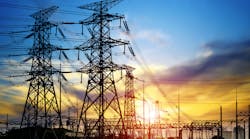Black & Veatch (B&V) helps us understand where utilities are headed by polling executives in its annual Strategic Directions: Electric Report. Every year, B&V executives connect with their utility executive counterparts to perform this survey. While input from individual utilities is kept confidential, B&V provides summaries back to the utilities.
The results really don’t shift much from year to year. Let’s face it. T&D is mostly an invisible job — unless something goes wrong. Not that the job isn’t rewarding. Most of us love staying behind the scenes and working hard to make sure the system operates well.
Here are the highest priorities at our utilities:
1. Reliability (for three years running) — This isn’t surprising since most customers take this as a given.
2. Cybersecurity (also for three years running) — This makes sense since cyber is tied closely to reliability.
3. Aging infrastructure — This really doesn’t surprise me as utilities are squeezed between upgrading and maintaining their facilities while holding down costs.
4. Long-term investment — With all the changes swirling around in power delivery, we need to be careful with asset spend so we don’t accidentally strand future investments.
5. Physical security — This is closely related to reliability.
One thing I really liked about the most recent survey, published in August 2018, is the more granular categories. It helps us to focus our editorial coverage.
What Executives Said
B&V started with this tough question, “Do you perceive a utility death spiral as a real, potential outcome?” Some 48% responded, “Yes, if utilities fail to implement their own alternative energy solutions.” And 39% said, “Yes, if regulatory models preclude market flexibility.” This indicates executives are aware of the risks new technologies and new players bring with them, and they realize the inherent risks in standing by idly.
For the question on what are the best options for utility-scale renewable integration, utility-scale storage topped all choices at 66.4% of responders. Greater adoption of electric vehicles (EV) with smart EV charging was down significantly this year at 20.3% of responders.
When it comes to automation, most utilities are employing or plan to employ some level of smart distribution. But, we have a long way to go, as 41% of responders see themselves at a low or very low level of automation while 39% consider themselves to be at a medium level. When asked where the challenges lie, 34.8% stated the need for reliable network and security communications. Just under 25% mentioned the challenge of selecting an advanced distribution management system, and 17% brought up the difficulty of developing proper power system models.
Microgrids are front and center at most utilities, with 63% of responders stating they have built a microgrid, are developing a microgrid or have microgrids built into their technology roadmap.
Utilities increasingly are realizing they need to collaborate with major customers to play in the energy game. Most utilities have yet to invest in DER, with only 28% of responders stating they already operate distributed generation while another 26% expect to own facilities within the next five years to 10 years. When asked how likely third parties are to enter their markets and provide alternative energy solutions to customers, 37% responded very likely.
When asked what role they see themselves playing in the alternative energy solutions space, 50% of executives responded, “Working behind the meter with customers who are interested in moving to alternative energy sources.” Furthermore, 47% responded they are working on regulatory models to enable investments in alternative energy and the traditional grid.
Utilities see promise in revenue growth through EV charging. When asked how they plan to manage the additional load demand on the grid caused by EV adoption, 27% see this issue addressed by modernizing the grid and 24% see preferential time-based rates as the preferred way to go.
The Way Forward
John Chevrette, the president of the B&V consulting group put forth these questions:
• Do you have a clear roadmap for how your organization will grow earnings?
• What is your strategy for addressing potential competition?
• What are your existing market solutions lacking?
• Is your organization well-positioned to explore new/alternative business models?
• What value does your organization put on innovation?
The answers to these questions will help frame your future. No single approach will fit all.
Business and technology roadmaps will continue to evolve as customer wants and needs change, as societal pressures evolve and as new technologies emerge. Let’s step forward and meet our increasingly complex energy future.


